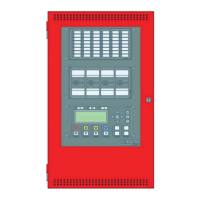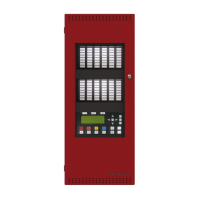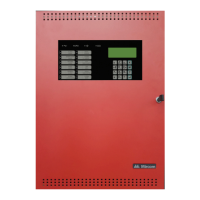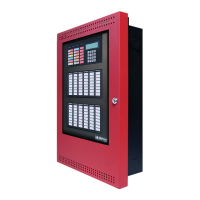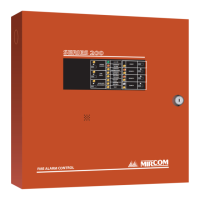FX-2000 Series Installation and Operation Manual
57
Indicating (Signal) Circuits Types
Monitor
This is a supervised general purpose non-latching input used mainly for correlating to a
relay circuit. No other system condition occurs as a result of its activation (short-circuit),
although it is supervised for trouble (open-circuit).
Trouble-Only
This circuit is used for monitoring a trouble condition from an external device such as a
Mircom Series 500 Audio System. Both open and short circuits generate a non-latching
trouble condition.
Indicating (Signal) Circuit
Type
Description
Silenceable Signal
For audible devices such as bells and piezo mini-horns that may be silenced either manually or
automatically. While sounding, these follow the pattern appropriate for the condition: the
configured evacuation code (default is temporal code) during single-stage alarm, or two stage
general alarm, or the alert code during a two stage system's alert (first) stage.
Non-Silenceable Signal
For audible devices such as bells and piezo mini-horns that may not be silenced either manually
or automatically. While sounding, these follow the pattern appropriate for the condition: the
configured evacuation code (default is temporal code) during single-stage alarm, or two-stage
general alarm, or the alert code during a two stage system's alert (first) stage.
Coded Signal
For audible devices such as bells and piezo mini-horns that may be activated in code. The code
consists of 4 digits with each digit consisting of 1-15 pulses on the signals. Each coded circuit
can sound the complete code 1 to 15 times after which signals go silent or revert to programmed
General Alarm rate.
Note: The NFPA-72 and ULC-S527 specify temporal tone. However, for retrofits of systems
that were previously approved, coded signalling is allowed.
Strobe For visual devices such as strobes that use no code patterns (they are continuous).
Initiating (Detection) Circuit
Type
Description
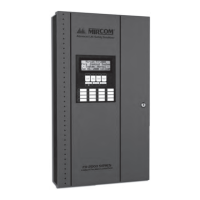
